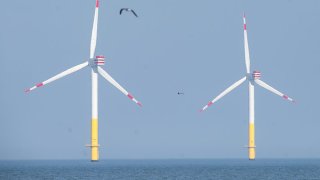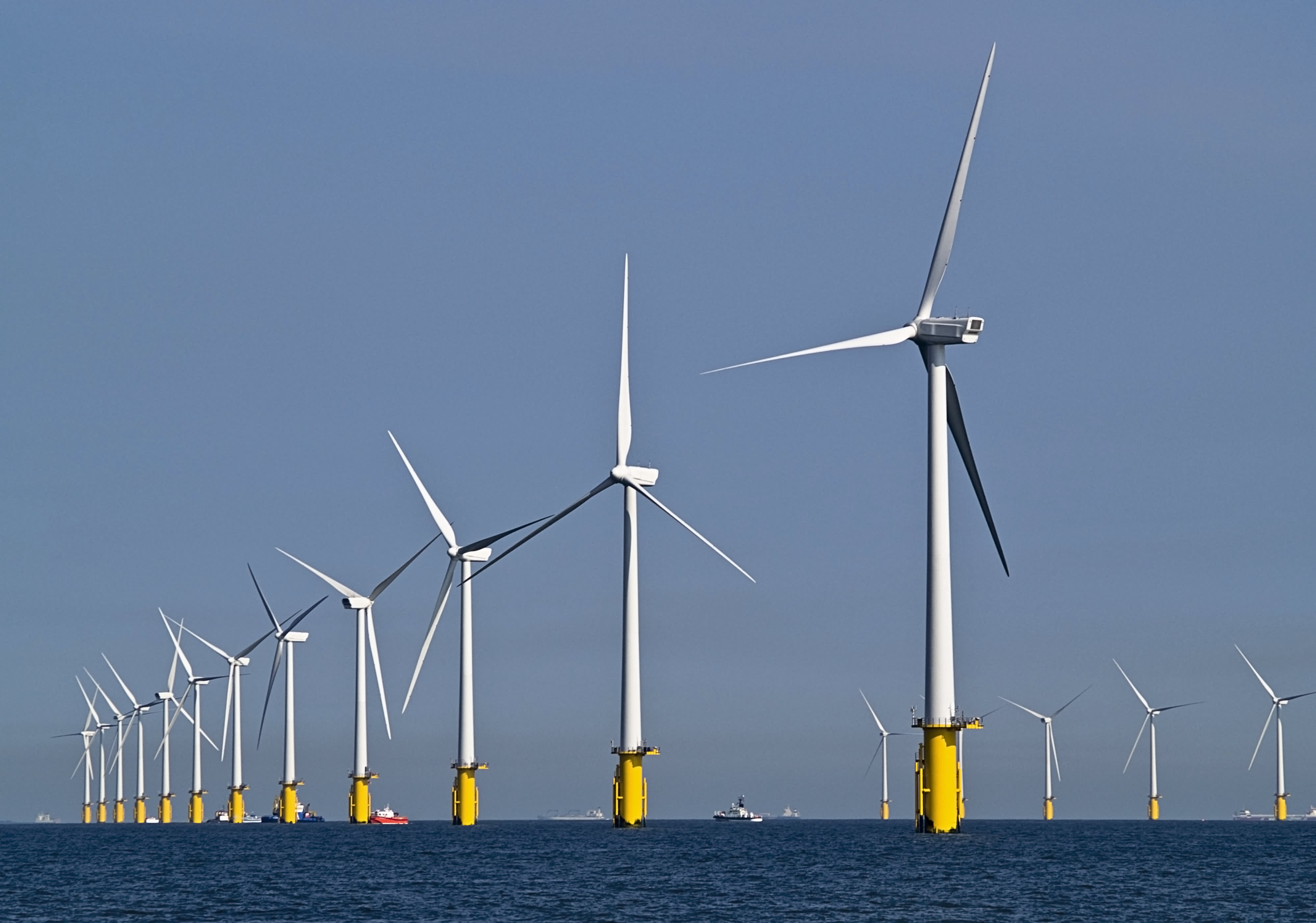
With legal deadlines looming on the path to more clean energy, Massachusetts has now lost three-quarters of the offshore wind capacity once in its pipeline after regulators on Friday allowed another developer to back out of contracts for a major installation.
The Department of Public Utilities approved SouthCoast Wind's proposal to pay utility companies a combined $60 million and terminate contracts it previously reached covering a combined 1,200 megawatts. The decisions clears the way for the developer to seek more money for the clean power that state officials are under massive pressure to acquire in the next few years.
Like Commonwealth Wind, another project that successfully backed out of its agreements for a 1,200-megawatt project, leaders of SouthCoast Wind have said they intend to submit a new bid in the next round of procurement that closes in January.
Both developers have argued that because of changing economic conditions, their projects are no longer financially viable under the contract terms they struck with utilities. By backing out of the contracts and rebidding in the next round, they are gambling that regulators will once again select them from a small field of competitors, but this time at a higher price.
Get New England news, weather forecasts and entertainment stories to your inbox. Sign up for NECN newsletters.
All three members of DPU's governing commission -- James Van Nostrand, Cecile Fraser and Staci Rubin -- signed the "stamp approval" for SouthCoast Wind's termination agreements. They did not pen any commentary explaining their ruling, though another state entity, the Department of Energy Resources, previously signaled its support for letting SouthCoast Wind out of its contracts with utility companies, saying the move would "allow for the project to seek viability through other means while preventing protracted litigation unlikely to produce additional ratepayer benefits."
"That the SouthCoast Wind Projects are untenable under current market conditions is disappointing. DOER maintains that the successful development of offshore wind projects in the region is essential for a clean, diversified energy portfolio as well as providing greater opportunities for development of local supply-chain and offshore wind industry jobs in the Commonwealth," officials at DOER, which like DPU is part of the Executive Office of Energy and Environmental Affairs, wrote on Sept. 15. "Approval of the Termination Agreements will help provide opportunity for the commercial success of the project. Additionally, DOER finds that the Termination Agreements consider ratepayer protections even under failed [power purchase agreements] with the return of over $60 million to ratepayers through each Company's Long-Term Renewable Contract Adjustment. This provision effects short-term rate relief to the Commonwealth in exchange for the Projects' lost opportunities."
SouthCoast Wind will pay $32.4 million to Eversource, $27.3 million to National Grid and $591,000 to Unitil under the termination agreements, and the utilities plan to credit payments to ratepayers through contract adjustments.
Deputies for Attorney General Andrea Campbell, who serves as the state's ratepayer advocate, warned regulators that allowing dissolution of the contracts would "represent a significant shift of the risks associated with building offshore wind facilities from private developers to ratepayers."
"In conjunction with its commitment to fostering the Commonwealth's decarbonization efforts, as the Commonwealth's ratepayer advocate, the AGO is also focused on and committed to mitigating the cost impacts to ratepayers of the clean energy transition," Assistant Attorneys General Jacquelyn Bihrle and Matthew Saudners wrote in a Sept. 15 letter to the DPU. "While the AGO believed appropriate ratepayer protections had been built into the terms of both the 2020 and 2022 PPAs to balance these interests, those Department-approved protections proved to be illusory as SouthCoast Wind determined that $60 million 'Termination Payments' are a preferred business approach to performing on its contractual obligations."
Campbell's office had called on the DPU to add "more robust safeguards" in future wind solicitations to deter additional contract cancellations and protect ratepayers. Bihrle and Saunders said the department "declined to adopt the AGO's recommendations."
The DPU's decision leaves just one project, the 800-megawatt Vineyard Wind, on the state's books, down from the combined 3,200 megawatts under contract following the most recent procurement round in 2021.
Vineyard Wind officials expect the project's first turbines to begin generating power this month, produce 200 to 300 megawatts by the end of the year and then hit full operations by mid-2024.
Massachusetts is not the only state struggling to cement its transition to offshore wind. Last month, Gov. Maura Healey joined five other East Coast governors in a letter to President Joe Biden warning that the nascent industry "is at serious risk of stalling" without federal action to help navigate sharp cost increases.
A Massachusetts law calls for procurement of 5,600 megawatts of offshore wind power by 2027, and Healey's team might need more steps to achieve that goal.
The administration in May kicked off the process to add between 400 and 3,600 megawatts in the next round of procurement, which is the fourth since Massachusetts began the current campaign to erect turbines off of its coast.
Now, even if the state picks projects totaling the maximum allowable 3,600 megawatts, two-thirds of that energy would effectively backfill capacity selected in previous rounds, and the cumulative amount of power in the pipeline would hit 4,400 megawatts -- still short of the 2027 target.
An administration official said Monday that the fourth procurement will not increase beyond 3,600 megawatts of capacity, confirming that at least one more round will be needed to close any remaining gap with the ultimate 5,600 target.
Bids for the fourth round are due on Jan. 31, 2024. Companies that terminated a previous offshore wind contract are still eligible to apply, but officials can take a bidder's "experience and track record" into account during the selection process. Bidders can also submit an "alternative indexed pricing" proposal, which would increase or decrease a project's cost based on macroeconomic factors.



